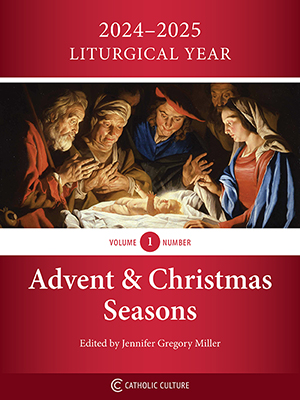They Yielded to Reality
Sunday April 21, 1996.
Regina caeli
... Whoever had condemned Jesus, deceived himself that he had buried his cause under an ice-cold tombstone. The disciples themselves gave into the feeling of irreparable failure. We understand their surprise, then, and even their distrust in the news of the empty tomb. But the Risen One did not delay in making himself seen and they yielded to reality. They saw and believed! ... Christ's Resurrection is the strength, the secret of Christianity. It is not a question of mythology or of mere symbolism, but of a concrete event. it is confirmed by sure and convincing proofs. The acceptance of this truth, although the fruit of the Holy Spirit's grace, rests at the same time on a solid historical base....
Sunday April 28, 1996.
Regina caeli
... The Catechism of the Catholic Church presents the Resurrection of the Lord as 'a real event, with manifestations that were historically verified' (CCC No. 639). This refers to the unequivocal testimonies offered by the New Testament.
The first act recorded by the Gospels is that of the empty tomb. 'In itself it is not a direct proof of Resurrection', but nevertheless 'its discovery by the disciples was the first step toward recognizing the very fact of the Resurrection' (CCC No. 640). All the Gospel accounts insist on this very first historically sound information. Were it baseless, it would not have been difficult to deny it.
Christ's appearances however were the decisive experience. Certainly, a most unique experience, but entirely credible, given the trust which those who were involved deserve. These included not only Peter and the other Apostles, but a large number of disciples, men and women to whom the Risen One appeared in different situations and circumstances, as Paul also testifies (cf I Corinthians 15, 4-8). To exclude all possibility of deceit, one need only consider the holiness of their lives, which for many ended in martyrdom. Moreover, there is nothing to make us think that they fell prey to mystical ecstasy or collective hallucination. Some of them, fishermen from Galilee, were used to very concrete reality, so that when they heard the first news of the Resurrection they reacted with understandable scepticism. The case of Thomas the Apostle was symbolic. Moreover, how can we suppose a facile enthusiasm in men who were disappointed and overwhelmed by the tragic death of their Teacher? Only the evidence of the risen Christ - which they perceived with their senses - adequately explains how they could commit themselves to so provocative a message, destined to arouse the violent reaction of their enemies. This in fact became quickly apparent, obliging them to sign their faithful witness with their own blood.
May the Blessed Virgin, Mother of the risen Lord, sustain our faith as she sustained the apostolic proclamation. She has a very special relationship with the Resurrection event: the Risen One is her son! That body which returns to life in the tomb and is raised to a state of glory is the same one fashioned in her womb. . . .
This item 5774 digitally provided courtesy of CatholicCulture.org






